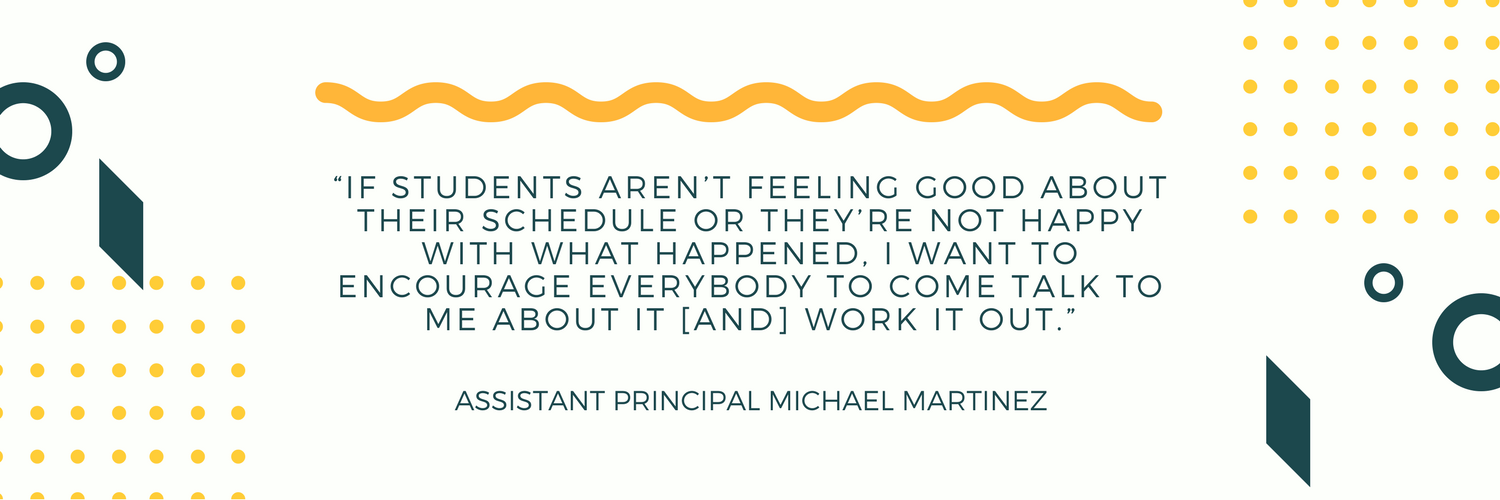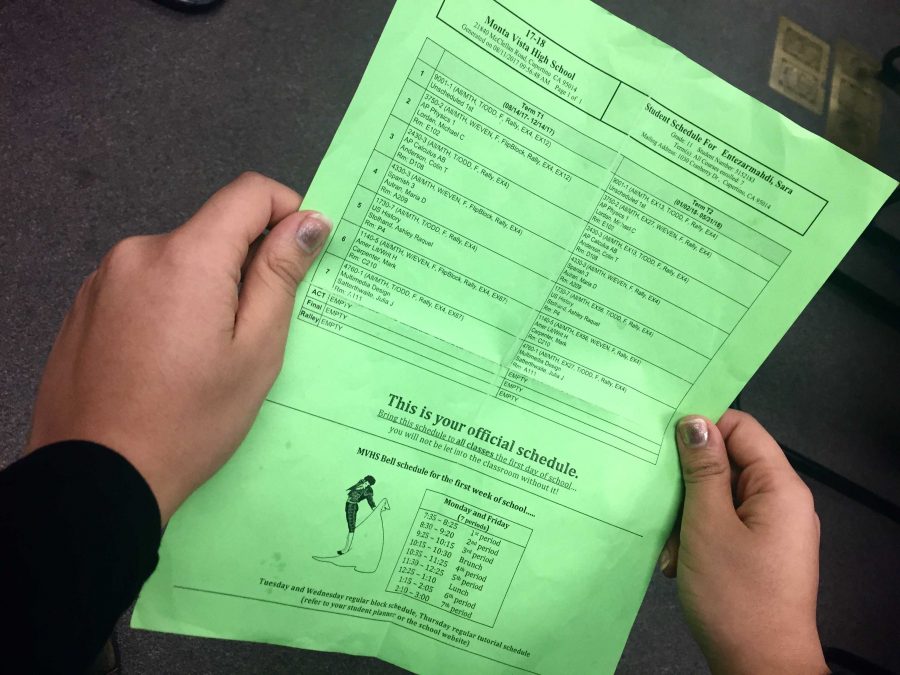eading her new schedule, freshman Anokhi Shah was dismayed to find that she did not receive Spanish 2, a course recommended in order to continue to Spanish 3 in her sophomore year. In the past few years, more and more students have been finding discrepancies in their course schedule and what they requested, some due to not enough teachers and some due to overbooking.
“I was surprised because I have an older brother and that never happened to anyone in his grade,” Shah said.
Shah now has to take extra steps to complete the language requirement by taking a Spanish 2 class online or by taking it during her sophomore year.
Java teacher Skip Mueller also noticed the difference in the amount of students in his computer science classes.
“This is the fourth year I’m teaching,” Mueller said. “And this is definitely the most students I’ve had per class.”

However, Mueller expands on the administration’s perspective and the difficulty in making schedules for students. According to him, there are only two computer labs, and it would be too costly to implement more equipment based on the fluctuation of students who want the class.
“It’s not quite as simple, even if we had more computer science teachers,” Mueller said. “Just adding in the classes, there’s a balancing act that we have when you add classes here.”
Biology teacher Pamela Chow has had similar experiences in terms of whether teachers are guaranteed the classes and prep periods they ask for.
“As teachers we also are told [that] we have to expect that sometimes things happen in the summer so things can get all shifted around,” Chow said. “In theory, when we leave in June it is somewhat set, with the expectation that it could change.”
According to Chow, the average number of students per science class is 32.5. Though some classes can have more than that, this would result in other classes being smaller in order to balance the number of students each teacher has. The administration can’t add students to classes at any given time because the school has to keep the average number of students controlled throughout the year to balance the workload of teachers.
This year, scheduling was especially hard on the administration because they are currently juggling the new construction changes, teachers moving classrooms and a new assistant principal team. Assistant principal Michael Martinez, who filled the position of former assistant principal Michael Hicks, had to make the master schedule for all students. The job shift proved tricky for Martinez, who had to learn how to arrange schedules during the summer.

“This year was a little bit more unique than your typical year just because we had a lot of construction and movement going on,” Martinez said. “For somebody brand new taking it over and [being] a second year assistant principal, I think all I can say is I did my best with what I had and I’m gonna keep doing better every single year because I want to do right for [the students].”
Martinez said he took over his new duties after Hicks had created the basic schedule, meaning he had to adjust schedule changes from Running of the Bulls. However, it’s inevitable, despite this year’s special circumstances, for students, teachers and administration to deal with schedule changes every year, and it continues to affect members of each group.
“If students aren’t feeling good about their schedule or they’re not happy with what happened, I want to encourage everybody to come talk to me about it [and] work it out,” Martinez said. “It’s important to me that [students] feel heard in the process.”
Computer science department faces dilemma with influx of students
This year, the computer science department has had a particularly difficult time placing students into classes. Mueller explains that there are only 38 computers in the computer lab, so to try and meet the high demand for computer science classes and accommodate every student has put a strain on the department.
Mueller also emphasized that it’s not just a matter of adding more computer science teachers and classes, but that there has to be a balance between the number of classes and class sizes of different departments.
“If we had enough [space] for 10 Java classes instead of seven I don’t know if they could just make that change without [cutting other classes] to justify that,” Mueller said.
He speculates that the influx may be because of new computer science classes being taught at local middle schools or the influence of a STEM-oriented environment.
As a result of the higher demand, more teachers have been teaching computer science classes. Senior Rishi Upadhyay believes this might be an issue because new teachers may not have had enough experience teaching it before.
“Some teachers aren’t entirely clear on how to teach things the first year, so topics can be a little confusing” Upadhyay said. “I think most of them are qualified now, [though], because after you get a couple years of practice, you understand what needs to be taught and how to teach it.”
With all of the pressure for the administration to accommodate all students, Mueller thinks they have their hands tied on what they can do to alleviate the problem. He sees it as not just a matter of adding more teachers and classes, but also an issue of balancing those classes in perspective to the other departments on campus.
Written by Zara Iqbal, Claire Yang and Aanchal Garg
Reporting by Zara Iqbal, Claire Yang, Aanchal Garg, Katerina Pappas, Claire Chang, Ruth Feng and Nicholas Chen








